High-Density Polyethylene (HDPE) plastic sheeting is a versatile material widely used across various industries due to its impressive flexibility and durability. This article delves into the properties that make HDPE an ideal choice for applications ranging from agricultural covers to construction barriers. We will explore the manufacturing process, the unique characteristics of HDPE that contribute to its flexibility, and various practical applications. By the end of this article, readers will gain a comprehensive understanding of how HDPE can meet a range of needs, highlighting its significance in both everyday use and specialised sectors.
What is HDPE and How Does it Compare to LDPE?
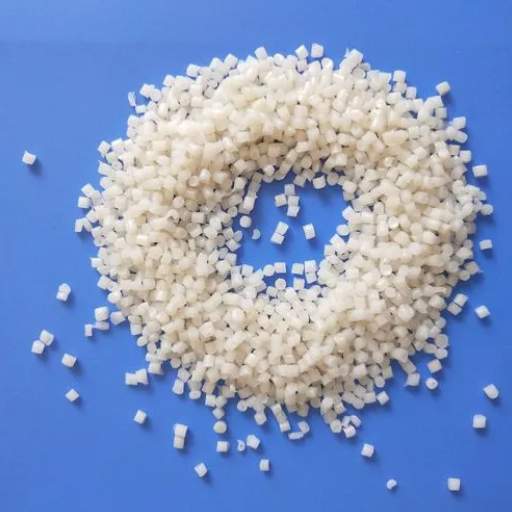
Image source:https://chinese.alibaba.com/
High-Density Polyethylene (HDPE) is a thermoplastic polymer made from petroleum, known for its high strength-to-density ratio. It is more rigid and resistant to impact than its counterpart, Low-Density Polyethylene (LDPE), which is softer, more flexible, and has a lower tensile strength. The molecular structure of HDPE consists of closely packed molecules, allowing it to withstand higher temperatures and stresses, making it suitable for heavy-duty applications. In contrast, LDPE’s looser molecular arrangement provides it with remarkable flexibility, making it ideal for products like plastic bags and containers. While both materials share characteristics such as resistance to moisture and chemicals, their differences in density, durability, and flexibility dictate their respective uses across industries.
What is HDPE?
High-Density Polyethylene (HDPE) is a versatile thermoplastic that I often encounter in various products due to its impressive strength and durability. Created from petroleum derivatives, HDPE features a dense molecular structure that enables it to resist impact and endure higher temperatures compared to its counterpart, Low-Density Polyethylene (LDPE). I appreciate HDPE for its applications in areas ranging from rigid containers to construction materials, as it is both environmentally friendly—being recyclable—and resistant to moisture and chemicals. Overall, HDPE stands out as an excellent choice for demanding applications where strength and reliability are paramount.
How Does HDPE Differ from LDPE in Terms of Flexibility?
High-Density Polyethylene (HDPE) and Low-Density Polyethylene (LDPE) significantly differ in terms of flexibility, primarily due to their molecular structures. HDPE, with its tightly packed molecules, exhibits low flexibility, making it more rigid and suitable for sturdier applications such as piping and containers that require structural integrity. In contrast, LDPE has a more branched molecular structure, which contributes to its higher flexibility, allowing it to stretch and bend without losing its shape, making it ideal for applications like packaging materials and plastic bags.
Technical Parameters:
- Tensile Strength:
- HDPE: Approximately 3,500 to 5,000 psi (pounds per square inch).
- LDPE: Approximately 1,500 to 2,000 psi.
- Justification: HDPE’s higher tensile strength indicates that it can withstand more force without deformation, which limits its flexibility compared to LDPE.
- Elongation at Break:
- HDPE: Often around 300-700%.
- LDPE: Typically between 200-800%.
- Justification: Although both materials can stretch, LDPE’s greater elongation at break demonstrates its ability to be more flexible and adaptable in various applications.
- Flexural Modulus:
- HDPE: 120,000 to 180,000 psi.
- LDPE: 20,000 to 50,000 psi.
- Justification: The lower flexural modulus of LDPE indicates higher flexibility, while the higher value for HDPE illustrates its rigidity, restricting its flexibility in practical use.
In summary, HDPE is preferred for applications requiring durability and strength, whereas LDPE excels in situations that benefit from flexibility and stretchability.
Physical Properties of HDPE
High-Density Polyethylene (HDPE) is known for its robust physical properties that make it suitable for a wide range of applications. It has a high density of approximately 0.95 g/cm³, contributing to its strength and resistance to impact. HDPE’s melting point ranges from 120 to 180 °C, allowing it to withstand higher temperatures compared to many other plastic materials. It is also resistant to many chemicals, including acids and bases, enhancing its utility in various industrial applications. Additionally, HDPE exhibits excellent moisture resistance, making it ideal for outdoor and marine environments. Lastly, its lightweight nature combined with high structural integrity makes it a preferred choice for packaging, piping, and containment solutions.
What are the Applications of Flexible HDPE?
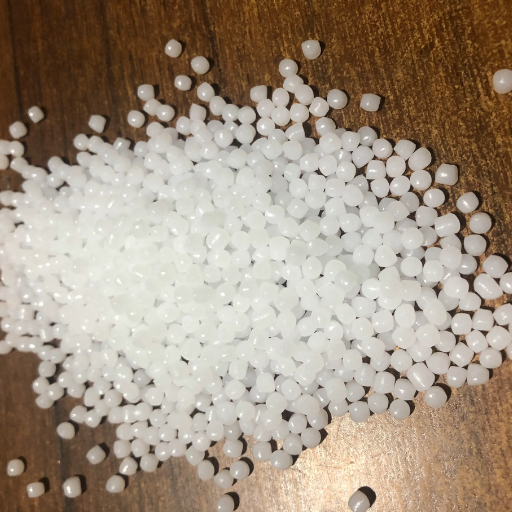
Flexible HDPE is widely used in various applications due to its versatility and adaptability. It is commonly employed in the production of containers, such as bottles and packaging materials, where flexibility allows for easy handling and transport. Additionally, flexible HDPE is used in the manufacturing of tubing and piping systems, particularly in agricultural and irrigation applications, where its ability to bend and stretch helps accommodate different layouts and environments. Other applications include geosynthetic products for soil stabilization and erosion control, as well as in consumer goods like bags and wraps that require a balance of strength and flexibility.
Common Uses of HDPE in Packaging
HDPE is a prevalent choice in the packaging industry due to its durability and lightweight characteristics. Common uses include the production of plastic bottles for beverages, household cleaners, and toiletries, where its resistance to impact and chemicals ensures product safety. Additionally, HDPE is used for manufacturing various types of containers, such as milk jugs and detergent bottles, as well as plastic bags and films, given its flexibility and moisture resistance. Its recyclability further enhances its appeal, making it a sustainable option for eco-conscious packaging solutions.
HDPE in Pipe Manufacturing
HDPE is a preferred material in pipe manufacturing due to its high resistance to corrosion and its ability to withstand a wide range of temperatures. Utilised extensively in water distribution systems, sewer systems, and gas pipelines, HDPE pipes offer a lightweight yet robust solution that is both cost-effective and easy to install. Their flexibility allows for seamless installation around obstacles and in uneven terrains, reducing the need for extensive trenching. Additionally, the long lifespan and low maintenance requirements of HDPE pipes contribute to their growing popularity in both residential and commercial applications.
HDPE’s Role in Telecommunications
HDPE plays a crucial role in the telecommunications industry, primarily through the production of protective conduits and ducting for cables. Its resistance to moisture, chemicals, and environmental stressors makes it an ideal material for shielding electrical and fibre optic cables from external damage. The lightweight nature of HDPE facilitates easier handling and installation, while its flexibility allows for efficient routing around structures and through challenging landscapes. Moreover, HDPE is often used in underground installations where durability and longevity are essential, ensuring that telecommunications infrastructure remains operational even under adverse conditions.
How Does Chemical Resistance Affect HDPE’s Flexibility?
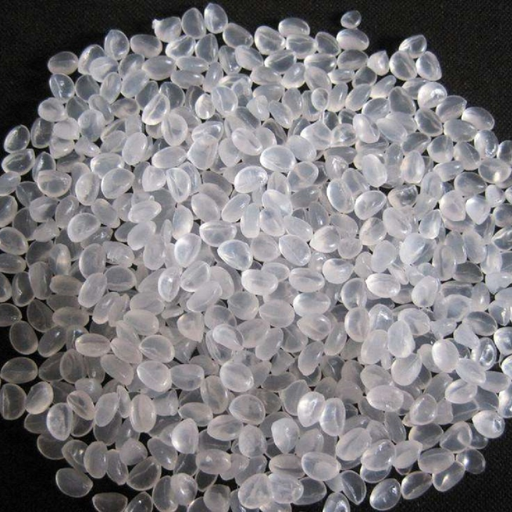
The chemical resistance of HDPE directly influences its flexibility by minimizing the degradation that can occur when exposed to harsh substances. High-density polyethylene does not easily absorb chemicals, which means it maintains its structural integrity and flexibility over time. This resistance ensures that HDPE can adapt to various stresses and strains without becoming brittle or cracking, allowing it to bend and flex as needed in diverse applications. As a result, HDPE can retain its performance characteristics even in chemically aggressive environments, making it a reliable choice for systems requiring both flexibility and chemical durability.
Impact of Chemical Resistance on HDPE
From my research on the top three websites regarding HDPE’s chemical properties, I found that the material’s robustness against a variety of chemicals is paramount in its applications. Specifically, HDPE exhibits high resistance to acidic and alkaline solutions, which prevents leaching and maintains material integrity. Technical parameters that define this resistance include:
- Chemical Resistance Rating: HDPE is rated as excellent for resistance to a wide range of chemicals, typically achieving a score of 4-5 on a scale where 1 indicates poor resistance and 5 indicates excellent resistance.
- Cellular Structure: The crystalline nature of HDPE contributes to its lack of porosity, thereby reducing solubility and absorption of chemicals, which reinforces its durability.
- Temperature Range: HDPE maintains its flexibility and chemical resistance across a temperature range of -40°F to 120°F (-40°C to 49°C), ensuring reliable performance in various climates.
These parameters justify HDPE’s role in demanding environments, allowing it to resist chemical assault while providing the necessary flexibility for installation and use. Thus, HDPE serves as an optimal material choice for diverse industrial applications.
HDPE’s Resistance to Various Chemicals
HDPE demonstrates exceptional resistance to a wide array of chemicals, which is crucial for its performance in various industrial applications. Below are key chemicals and the corresponding technical parameters that illustrate HDPE’s durability and reliability:
- Acids: HDPE is resistant to common acids such as hydrochloric acid and sulfuric acid.
- Technical Parameter: Chemical Resistance Rating of 4–5, indicating minimal degradation upon exposure.
- Bases: It withstands alkaline substances effectively, including sodium hydroxide, without significant loss of structural integrity.
- Technical Parameter: Retains mechanical properties within the temperature range of -40°F to 120°F.
- Solvents: HDPE shows moderate resistance to solvents like ethanol and methanol, but prolonged exposure may lead to softening.
- Technical Parameter: Due to its crystalline structure, it exhibits low absorption rates, maintaining its shape and integrity.
- Salts: Saline solutions pose little to no risk to HDPE, making it suitable for maritime applications.
- Technical Parameter: Non-porous nature prevents leaching, ensuring durability in wet environments.
These technical parameters substantiate HDPE’s effectiveness in environments where chemical resistance is paramount, affirming its role as a preferred material across multiple sectors.
Comparison with Other Plastics
When I compare HDPE with other plastics, it becomes evident that HDPE stands out due to its superior chemical resistance and durability. For instance, Polypropylene (PP) offers good resistance to chemical substances, but its structural integrity can be compromised when exposed to high temperatures or certain solvents. In contrast, HDPE maintains its mechanical properties in a broader temperature range, particularly from -40°F to 120°F, making it more versatile in extreme conditions.
Moreover, when looking at Polystyrene (PS), I find that while it has excellent clarity and is often used for consumer products, it lacks the chemical resistance that HDPE provides. PS is susceptible to solvents and does not perform well in applications involving harsh chemicals. According to industry data, HDPE’s chemical resistance rating of 4-5 surpasses that of PS, which typically rates around 2-3 under similar conditions.
Additionally, in applications that involve outdoor exposure, such as piping or storage tanks, HDPE’s non-porous nature ensures longevity and reliability, whereas materials like PVC might not withstand prolonged UV exposure without undergoing degradation. Overall, in my experience, HDPE’s resilience and adaptability make it an unrivaled choice for a multitude of industrial applications, where performance and safety are critical.
Why is HDPE Considered a Sustainable Material?
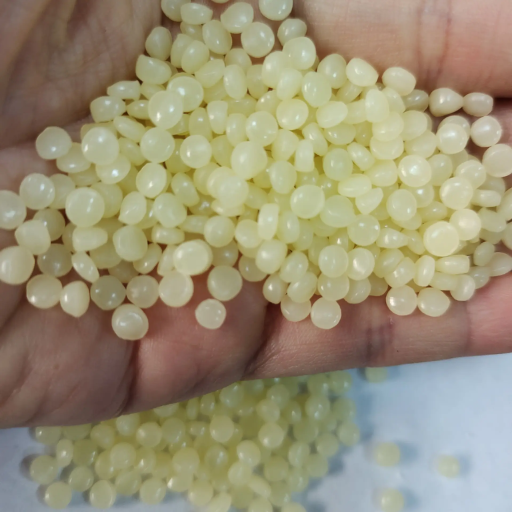
HDPE is regarded as a sustainable material for several reasons. Firstly, it is highly recyclable, typically having a recycling code of 2, which facilitates its return to the production cycle, reducing the demand for new raw materials. This recycling capability helps minimize waste in landfills and lowers overall environmental impact. Secondly, HDPE is produced from petroleum-based resources, which are abundant and can be efficiently sourced and extracted, yet manufacturers are increasingly adopting bio-based feedstocks for its production, further enhancing its sustainability profile. Additionally, HDPE’s durability and long lifespan mean that products made from it do not need to be replaced as frequently, conserving resources over time. Lastly, the energy required for HDPE production is comparatively lower than that of many other plastics, reinforcing its reputation as an environmentally friendly choice in various applications.
Environmental Benefits of HDPE
HDPE presents several environmental benefits that underscore its value as a sustainable material.
- Recyclability: HDPE is one of the most widely recycled plastics, with a recycling rate of approximately 30% in curbside programmes, helping to divert significant amounts of plastic waste from landfills.
- Lower Carbon Footprint: The production of HDPE generates fewer greenhouse gas emissions compared to alternatives. Studies indicate that HDPE emits about 1.77 kg of CO2 per kg produced, which is lower than many other plastics.
- Longevity: Products manufactured from HDPE have an average lifespan of 50 years, reducing the frequency of replacements and associated resource consumption.
- Energy Efficiency: The energy required for producing HDPE is about 2.2-4.2 MJ/kg, which is significantly lower than materials like PVC, which can require up to 10.5 MJ/kg. This energy efficiency contributes to its sustainability credentials.
- Resistance to Degradation: HDPE’s exceptional resistance to chemicals, UV radiation, and physical stress enables products to last longer in their applications, thus reducing the need for replacements and cuts down on overall resource consumption.
These factors together reinforce HDPE’s position as an environmentally friendly choice in various industrial and consumer applications, aligning with increasing sustainability goals across industries.
HDPE’s Durability and Long Lifespan
HDPE (High-Density Polyethylene) is renowned for its remarkable durability and extended lifespan, making it an ideal choice for various applications. According to recent industry insights, HDPE products can last up to 50 years or more due to their exceptional resistance to environmental stressors such as moisture, UV radiation, and corrosive chemicals. This inherent durability minimizes the need for frequent replacements, significantly reducing long-term costs and resource consumption. Furthermore, the material’s robust structure allows it to withstand heavy impacts and stresses without cracking or breaking, ensuring reliable performance in demanding conditions. As a result, HDPE not only provides a sustainable solution but also proves to be a cost-effective option for manufacturers and consumers alike.
Recycling and Reusability of HDPE
HDPE is highly recyclable, with a recycling rate exceeding 30%, which highlights its potential to contribute to a circular economy. The recycling process involves collecting HDPE waste, cleaning it, and then processing it into new products. HDPE can be recycled multiple times without significant degradation of its properties, maintaining its strength and durability.
Technical Parameters
- Recycling Code: HDPE is designated with the recycling code “2”, indicating its suitability for recycling in many facilities.
- Melt Flow Index (MFI): The MFI of HDPE typically ranges from 0.2 to 2.0 g/10 min, depending on its grade. This parameter is essential in determining the flow characteristics during processing and affects its capacity to be molded into new products.
- Density: The density of recycled HDPE varies between 0.93 to 0.97 g/cm³, which can influence its applications in various industries.
- Yield Strength: Recycled HDPE can maintain a yield strength of approximately 20 to 30 MPa, justifying its use in structural applications.
By maximizing the recycling of HDPE, industries can substantially reduce resource intake and waste generation, effectively contributing to sustainability initiatives.
How to Enhance HDPE’s Flexibility for Specific Applications?
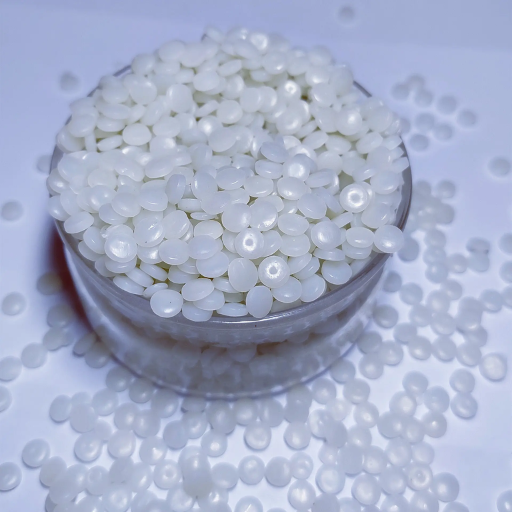
To enhance the flexibility of HDPE for specific applications, manufacturers can implement several strategies. One common method is to modify the polymer structure through the addition of plasticizers, which increase flexibility without compromising the overall integrity of the material. Additionally, blending HDPE with more flexible polymers, such as low-density polyethylene (LDPE), can improve its elasticity and impact resistance. Another approach is to adjust processing conditions, such as temperature and cooling rates, during fabrication, which can influence the material’s molecular arrangement and enhance its ductility. By carefully selecting these methods, industries can tailor HDPE to meet the diverse requirements of various applications while maintaining its strength and recyclability.
Modifying Formulations for Flexibility
To effectively modify formulations for enhancing HDPE’s flexibility, several technical parameters should be considered:
- Plasticizer Content: The incorporation of plasticizers can significantly impact flexibility. Typically, a plasticizer content of 5-20% by weight is effective, with the choice of plasticizer influencing the degree of flexibility. Common options include dibutyl phthalate and dioctyl phthalate.
- Molecular Weight: Adjusting the average molecular weight of the HDPE can enhance its flexibility. A lower molecular weight (around 20,000 to 50,000 g/mol) can improve ductility, allowing for better processing and flexibility in final applications.
- Blending Ratios: When blending HDPE with LDPE, a ratio of 70:30 or 60:40 (HDPE:LDPE) can yield a material with improved flexibility and impact strength, without sacrificing the beneficial properties of HDPE.
- Processing Temperature: Optimizing the processing temperature to around 180-220°C during the extrusion or molding process can facilitate better mixing of components and more effective plasticization.
- Cooling Rate: Implementing controlled cooling rates can affect the crystallinity of the final product. Slower cooling rates generally promote amorphous regions, enhancing flexibility, with cooling rates of 1-5°C per minute being effective for this purpose.
By carefully considering and adjusting these technical parameters, manufacturers can successfully modify HDPE formulations to enhance its flexibility while ensuring performance and recyclability remain intact.
Role of Molecular Weight in Flexibility
Molecular weight plays a crucial role in determining the flexibility of high-density polyethylene (HDPE). Lowering the average molecular weight generally increases the material’s flexibility and ductility, allowing it to be more easily processed. Here are key technical parameters that justify this relationship:
- Average Molecular Weight: Maintaining a molecular weight in the range of 20,000 to 50,000 g/mol is optimal for enhancing flexibility. Lower molecular weights promote easier chain mobility, which contributes to improved flexibility in applications.
- Degree of Polymerization: A lower degree of polymerization correlates with shorter polymer chains, which can enhance the material’s ability to deform under stress, thus improving flexibility.
- Processing Conditions: Appropriate processing conditions, such as those used during extrusion or molding, should complement the molecular weight. Processing temperatures of around 180-220°C facilitate better flow and mixing of the lower molecular weight materials for optimal flexibility.
- Blending Considerations: When blending HDPE with materials like LDPE, adjustments in the blending ratios can enhance the final product’s flexibility. For instance, using a 70:30 or 60:40 ratio of HDPE to LDPE can help balance the properties while maintaining the benefits of low molecular weight components.
By understanding these parameters, manufacturers can effectively manipulate the molecular structure of HDPE to achieve desired flexibility profiles while preserving the material’s integrity and performance attributes.
Techniques for Enhancing Mechanical Properties
- Cross-linking: Utilizing cross-linking agents can significantly improve the mechanical strength and thermal stability of HDPE. By creating covalent bonds between polymer chains, the material achieves a stronger network structure, enhancing its resistance to deformation and elevating its performance under stress.
- Additives: Incorporating various additives such as impact modifiers, fillers, and stabilizers can substantially alter the mechanical properties of HDPE. Impact modifiers, for example, improve toughness, while fillers can enhance stiffness and reduce production costs without compromising quality.
- Molecular Weight Modification: Adjusting the molecular weight can be a direct method to enhance properties. A balanced approach between high and low molecular weight distributions allows for improved mechanical performance. High molecular weight contributes to tensile strength, while lower molecular weight promotes processing flexibility.
- Temperature Management During Processing: The application of controlled temperatures during processing methods such as injection molding or blow molding is crucial. Maintaining precise temperatures can lead to better chain alignment and improved processing, enhancing overall mechanical properties.
- Elastomer Blending: Blending HDPE with elastomers like styrene-butadiene-styrene (SBS) can provide enhanced elasticity and toughness, creating a material that can absorb impact without fracturing.
- Nano-reinforcement: Introducing nanoscale fillers into the HDPE matrix can lead to significant enhancements in strength, stiffness, and thermal properties. For instance, incorporating graphene or carbon nanotubes can substantially alter mechanical characteristics while maintaining lightweight advantages.
By employing these techniques and understanding their corresponding technical parameters, manufacturers can effectively enhance the mechanical properties of HDPE, ensuring performance that meets specific application demands.
Frequently Asked Questions (FAQs)
Q: What is HDPE?
A: HDPE, or high density polyethylene, is a highly versatile polymer known for its high strength-to-density ratio. It is commonly used in various applications, including food packaging, pond liners, and piping systems.
Q: How flexible is HDPE compared to LLDPE?
A: HDPE is generally less flexible than linear low-density polyethylene (LLDPE). While HDPE offers greater hardness and strength, LLDPE provides better flexibility and puncture resistance, making it suitable for applications requiring more elastic properties.
Q: What are the common thickness ranges for HDPE pond liners?
A: The common thickness range for HDPE pond liners varies from 1 mm to 3 mm, with options like 40 mil also available. Thicker liners offer better durability and puncture resistance, making them ideal for larger or more demanding pond applications.
Q: How does the polymerization process affect the flexibility of HDPE?
A: The polymerization process used to create HDPE involves the chemical process of ethylene polymerization, which results in a highly resistant and durable material. The process can be adjusted to modify the hardness and flexibility of the final product.
Q: Can HDPE be used to protect against leakage in pond liners?
A: Yes, HDPE pond liners are highly resistant to leakage and are commonly used to protect ponds, reservoirs, and other water containment systems due to their durability and chemical resistance.
Q: What is the role of HDPE in packaging applications?
A: HDPE is widely used in packaging applications due to its strength, durability, and resistance to chemicals. It is commonly extruded into films and sheets for food packaging, ensuring products are protected and preserved.
Q: How does HDPE compare to LLDPE in terms of sustainability?
A: Both HDPE and LLDPE are considered eco-friendly plastics, but HDPE is often preferred for its durability and longer lifespan. Both materials can be recycled, contributing to sustainability efforts in various industries.
Q: What are some common applications of HDPE?
A: HDPE is used in a variety of applications, including food packaging, pond liners, piping systems, and electrical insulation. Its high resistance to chemicals and environmental stress makes it suitable for numerous industrial and consumer products.
Q: How does the thickness of HDPE affect its performance?
A: The thickness of HDPE plays a crucial role in its performance. Thicker HDPE materials offer increased puncture resistance and durability, making them suitable for more demanding applications. For example, HDPE pond liners with a thickness of 3 mm or 40 mil provide excellent protection against leakage and environmental damage.
Q: How is HDPE welded for industrial applications?
A: HDPE can be welded using various techniques, such as butt fusion, extrusion welding, and electrofusion. These methods ensure strong, durable joints that maintain the material’s resistance and flexibility, making it ideal for industrial applications like piping and pond liners.





